Baking with bacon? Try candying it first
Sugar-baked bacon takes your favorite treats to a brand-new level.
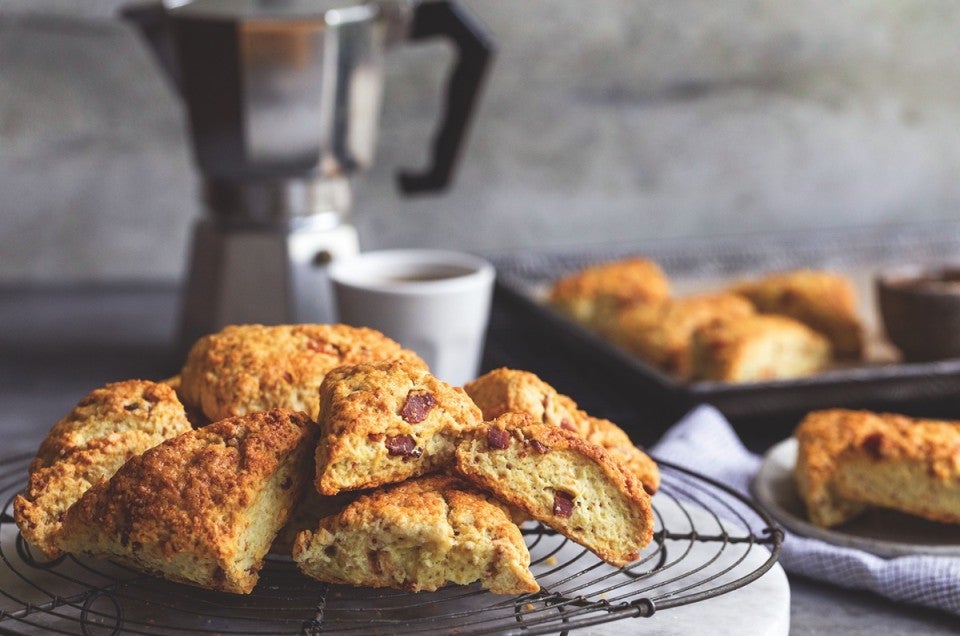

Salty, smoky, crispy — yummy. That’s bacon, right? Though it’s typically positioned as a side for eggs, pancakes, waffles, and various other favorites, it can also be an interesting baking ingredient. Crumbled into all manner of baked goods both savory and sweet — like these Truly Decadent Bacon Brownies — it’s a tasty example of the salty-sweet flavor combo many of us find so tempting.
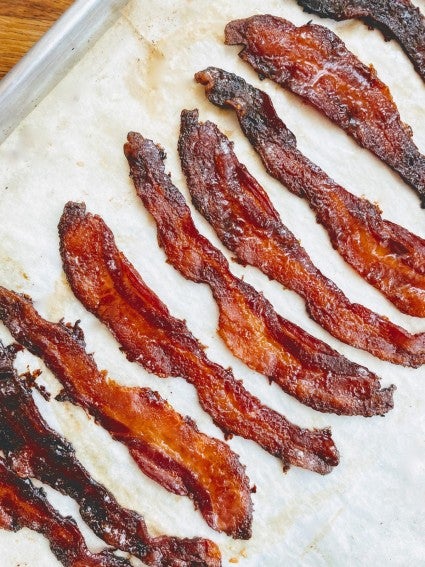
Now, what if you could deliver that salty-sweet flavor in one neat package? Enter candied bacon. Yes, you heard that right, candied bacon, as in bacon baked with a blizzard of brown sugar so it crisps up into shiny, mahogany-brown strips of salty-sweet irresistibility.
If you’re someone who likes a sprinkle of coarse sea salt atop your chocolate chip cookies, or that old New England favorite — a wedge of salty cheddar served alongside apple pie — then you’ll love candied bacon. Basically, what you’re doing is taking a standard strip of bacon, adding sugar, and doubling its flavor impact.
Candied bacon (aka bacon candy) is simplicity itself to prepare. Talk about delivering maximum flavor with minimum effort: Just lay your bacon strips onto a rimmed baking sheet, sprinkle with brown sugar or maple sugar, and bake until caramelized. Cool, crumble — and flip through your favorite recipes to figure out which ones totally need candied bacon! (After you sample a couple of hot, crispy strips first, of course.)
Baker’s tip: It’s far simpler to bake (rather than fry) bacon. Read my method in this post on a better way to make bacon.
Here’s what you’ll need:
Preheat your oven to 350°F.
Line your pan with parchment or foil. While not strictly necessary, lining the pan is a huge help when it comes time for cleanup.
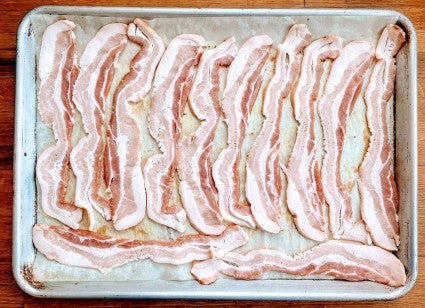
Lay the bacon strips on the pan. They can be very close together, but don’t overlap; you don’t want them to stick to one another as they bake.
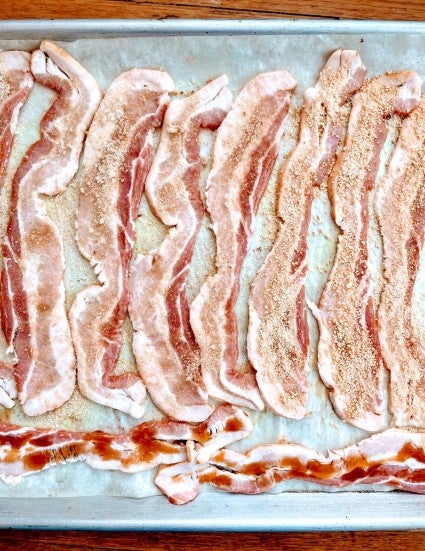
Sprinkle each piece of bacon evenly, end to end, with sugar. Using just 1 teaspoon of sugar per strip of bacon will yield mildly sweet flavor. Doubling the sugar will intensify the sweetness.
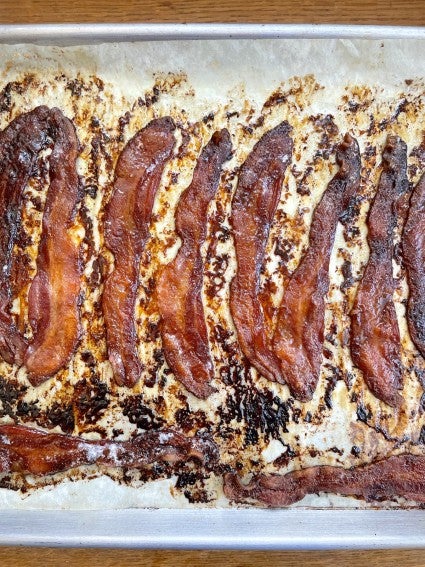
Bake the bacon for about 20 minutes, until it’s a very deep golden brown. For the most even baking, rotate the pan halfway through (back to front, front to back).
Transfer the bacon from the pan to a different piece of parchment or foil; you want to lift the bacon out of its grease to cool. Why not drain it on paper towels? Because the cooling sugar will stick to the towels, leaving you the frustrating job of picking bits of paper off your candied bacon!
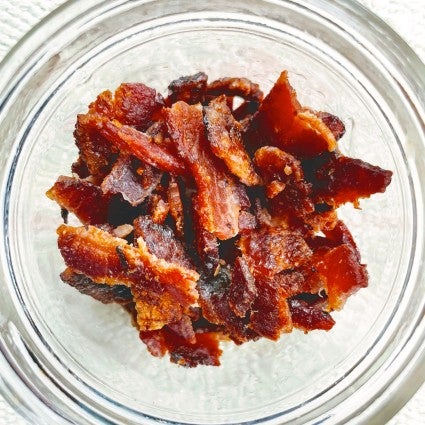
When the bacon’s completely cool, use a knife or pair of scissors to chop it up. (Frankly, I find it just as easy to use my fingers to tear the bacon into whatever size bits I want.)
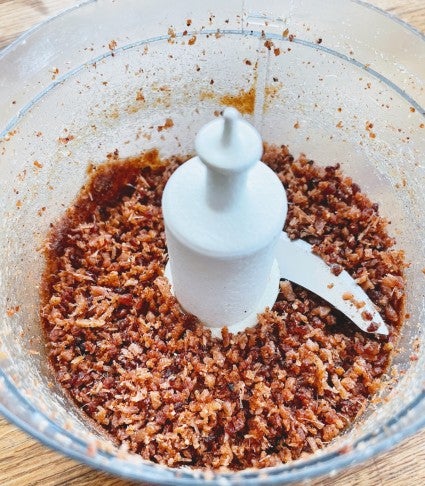
To make candied bacon “crumbles” — for sprinkling into cinnamon roll filling or atop glazed doughnuts, for instance — process the completely cooled bacon in a food processor or blender until crumbly. If the bacon’s not as sweet as you like, feel free to add additional sugar.
Store candied bacon in the refrigerator for a couple of days; or freeze for longer storage. I find storing bacon in a glass screw-top jar offers the best protection against further crumbling, as well as drying out.
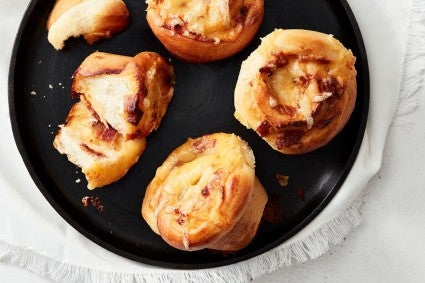
For recipes already calling for cooked bacon, simply substitute candied bacon for the standard cooked slice. Try it in our Maple-Bacon Scones, Maple-Glazed Bacon Doughnuts, Overnight French Toast, and Bacon Cheddar Buns.
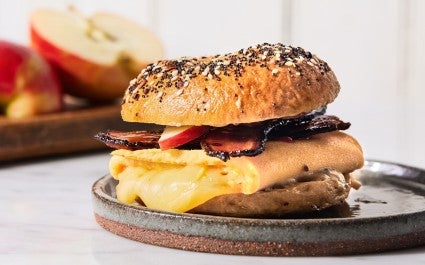
What about breakfast sandwiches? Start with our 2022 Recipe of the Year, Ultimate Sandwich Bagels, and build your own bacon-based favorite. Or check out a couple of our brand new bacon-forward breakfast sandwiches: The Vermonster and the Avocado BEC.
For recipes that don’t already call for bacon, think of candied bacon as an add-in similar to chopped nuts or dried fruit. Try adding chopped candied bacon to muffins, biscuits, scones, cookies, cake, quick breads — anywhere bacon’s salty-sweet-smoky flavor sounds like a good fit.
So would you add candied bacon to Lemon Squares? Um, probably not; to me, pairing bacon’s bold smokiness with lemon’s bright, sassy-sour flavor simply doesn’t sound good.
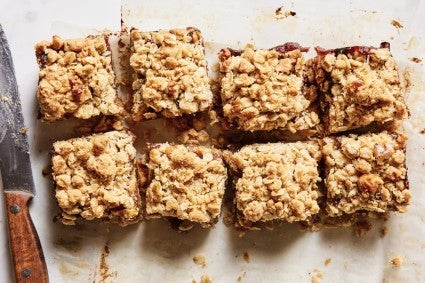
But candied bacon in earthy, oat-y Date Squares? Yes, I’d go there. And how about in one of my all-time favorite breakfast treats, cinnamon-scented Doughnut Muffins? Absolutely. And if you’ve never thought of pairing bacon with ice cream and waffles … now’s your chance. Check out the tip at the bottom of our recipe for Frozen Custard.
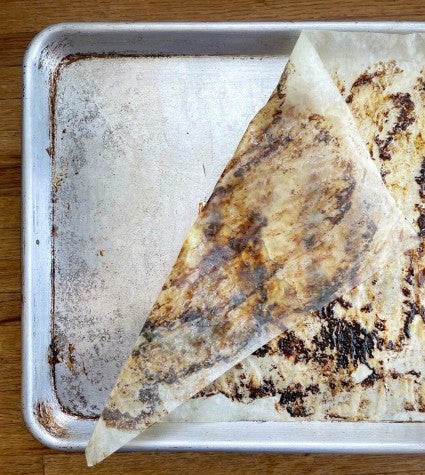
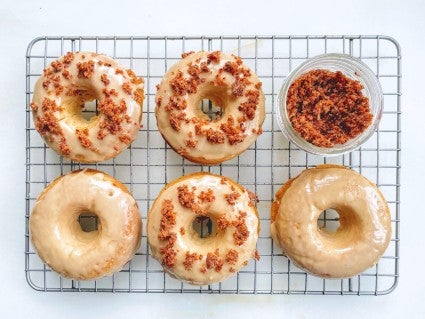
If you’re one of those people who just can’t get enough of salty + sweet, check out these recipes on our site, from Salty-Sweet Butter Pecan Cookies to Salted Caramel and Chocolate Tart.
Cover photo (Maple Bacon Scones) by Shilpa Iyer.

